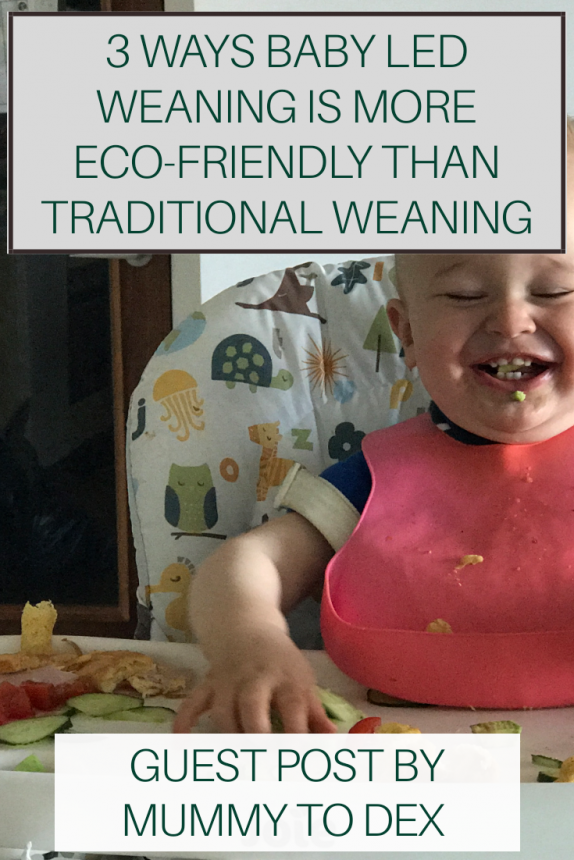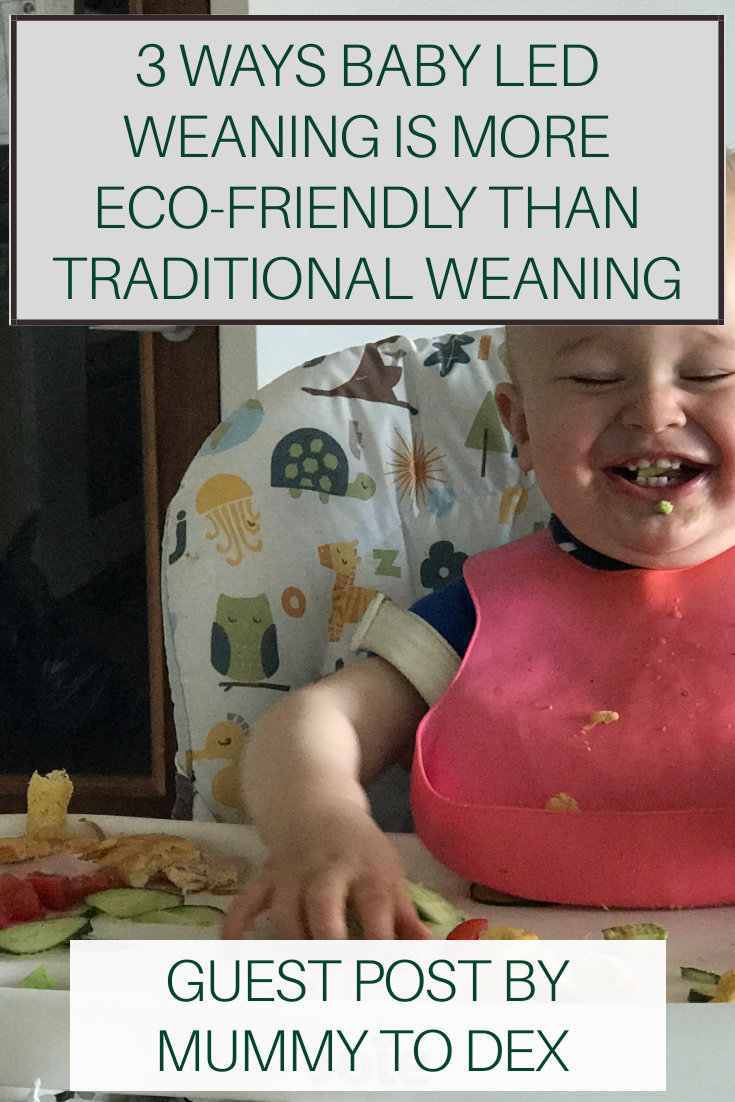Weaning our first son, Dexter, was one of the scariest, yet exciting times of our lives. We chose to wean him using the baby led weaning method and once we started, we never looked back. We recently began weaning our second son, Felix using the same method. He struggled slightly more than Dexter did for the first couple of weeks, but now at 9 months old, is a huge foodie, enjoying pastas, veggie burgers, omelettes and whatever else we put together for him.
Baby led weaning has had a profound impact on our lives and I’ve really enjoyed blogging about it over the last three years. I truly believe that baby led weaning is not just better for baby, but also better for the environment too, something that has become more and more important to me in recent years. It is vital that we do all we can to start protecting this planet so that our children and their children can still have it to live in and enjoy.
Here are my top three reasons how baby led weaning is more eco-friendly than traditional weaning.

No Single Use Plastic
There’s been a lot in the news recently about how we don’t have the capacity in this country to recycle anything that has been contaminated by food. This is the same for baby food pouches which cannot be placed in your recycling bin at home. Think of all the people who use pouches for every single meal and how much single use plastic is therefore being added to landfills. It really does not bear thinking about. Baby led weaning is all about making your own food from scratch using organic and healthy ingredients to create mouth watering meals baby can enjoy alongside you which means no single use plastic and the chance to choose recyclable packaging for the food you buy. (If it needs packaging at all.) Baby led weaning also means you don’t need to bother with cheap plastic spoons (if you do want to use a spoon for pre-loading yoghurt etc you can now find bamboo ones) meaning even less plastic being sent to landfill.
Less waste
Baby led weaning is all about letting baby set the pace when it comes to feeding. Most of the time, if you offer them a pouch or jar, they won’t want to eat the whole thing (especially if they’re still drinking a lot of milk) and the rest of the food will go to waste. With baby led weaning, you are simply offering them a little bit of whatever you are having so you can pop a little bit on their tray and add more should they demand it. Invariably, quite a bit ends up on the floor, especially when babies are still learning to eat. Hopefully your local authority provides you with a food recycling bin – but if not, this is your chance to write to them to find out why they don’t and when they plan to implement one!
Reduced Carbon Footprint
Traditional weaning requires you feed baby with a spoon which means you can’t all eat together as a family meaning you either end up preparing food six times a day or heating up your dinner which has gotten cold while you were spoon feeding. With baby led weaning you simply cook one meal for the family which you all share, cutting down on the use of the oven and microwave. You can also batch cook lots of yummy finger food such as veggie burgers, oat bites or savoury muffins giving you days where you don’t need to use the oven at all!
How else can you make baby led weaning more environmentally friendly?
• Avoid single use bibs and invest in a quality coverall bib which can be wiped down with a cloth
• Use environmentally friendly plates and spoons such as bamboo products as opposed to plastic ones
• Use reusable cloths to clean up as opposed to baby wipes

Author Bio
Nicola who blogs at Mummy to Dex lives in West Lancashire with her husband, three year old toddler Dexter and nine month old baby Felix. Extremely passionate about baby led weaning, she mainly blogs about this topic, but also write about pregnancy, travel, days out and life as a full time working Mum of two boys.
You can find her on Instagram, Pinterest (where she shares ALL of her recipes + others), Twitter and Facebook.
Mummy To Dex also has some great baby-led weaning breakfast ideas here too!


We love baby led weaning (BLW) but hate the cleaning up. We’ve tried tons of other bibs – long sleeved, silicon…
Also, my top choice when it comes to Bibs, its the one sold by Bibado, they are strong and always leave the dry and clean after eating.